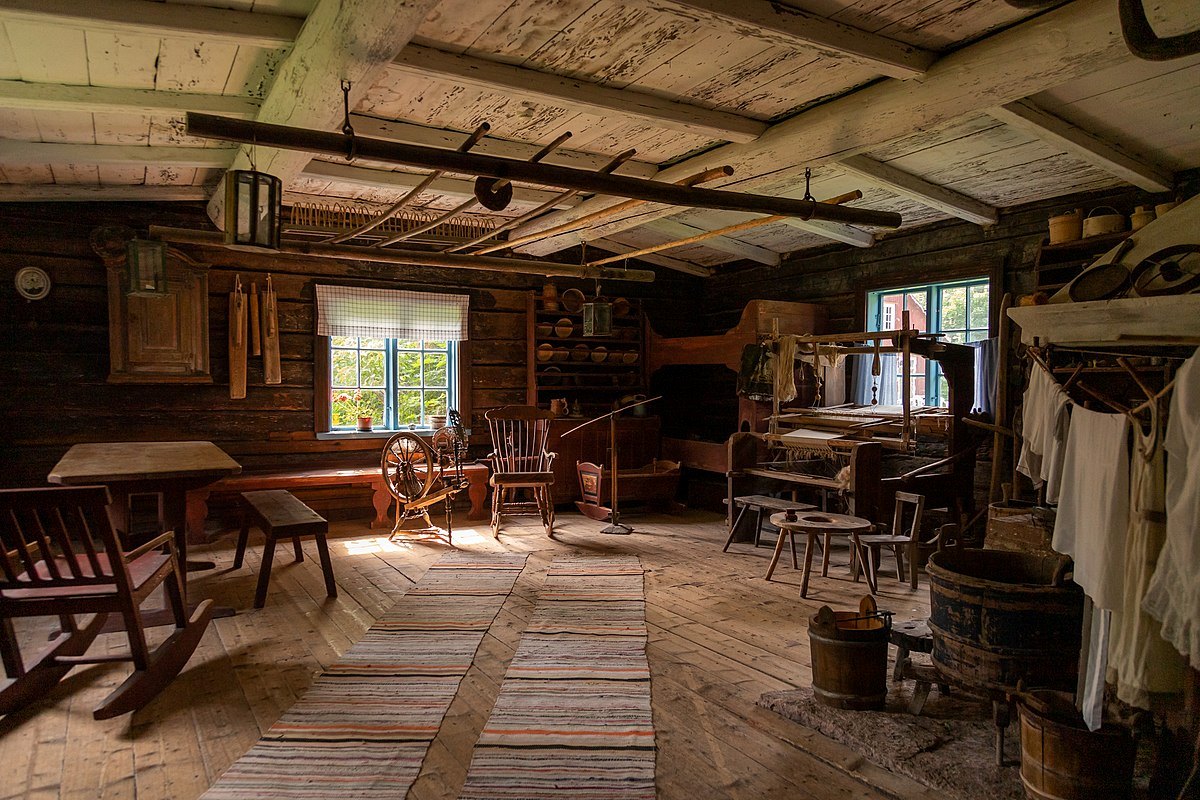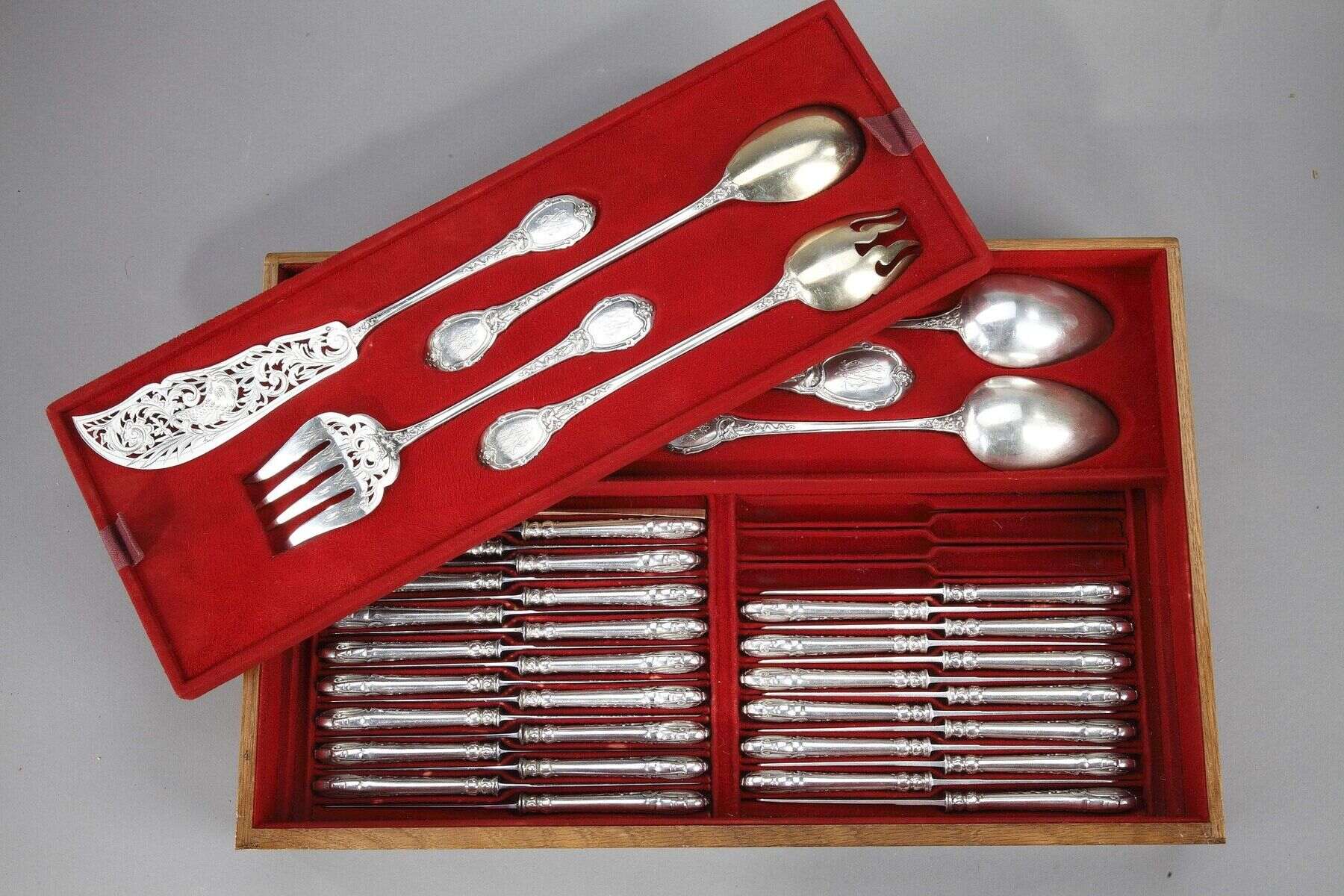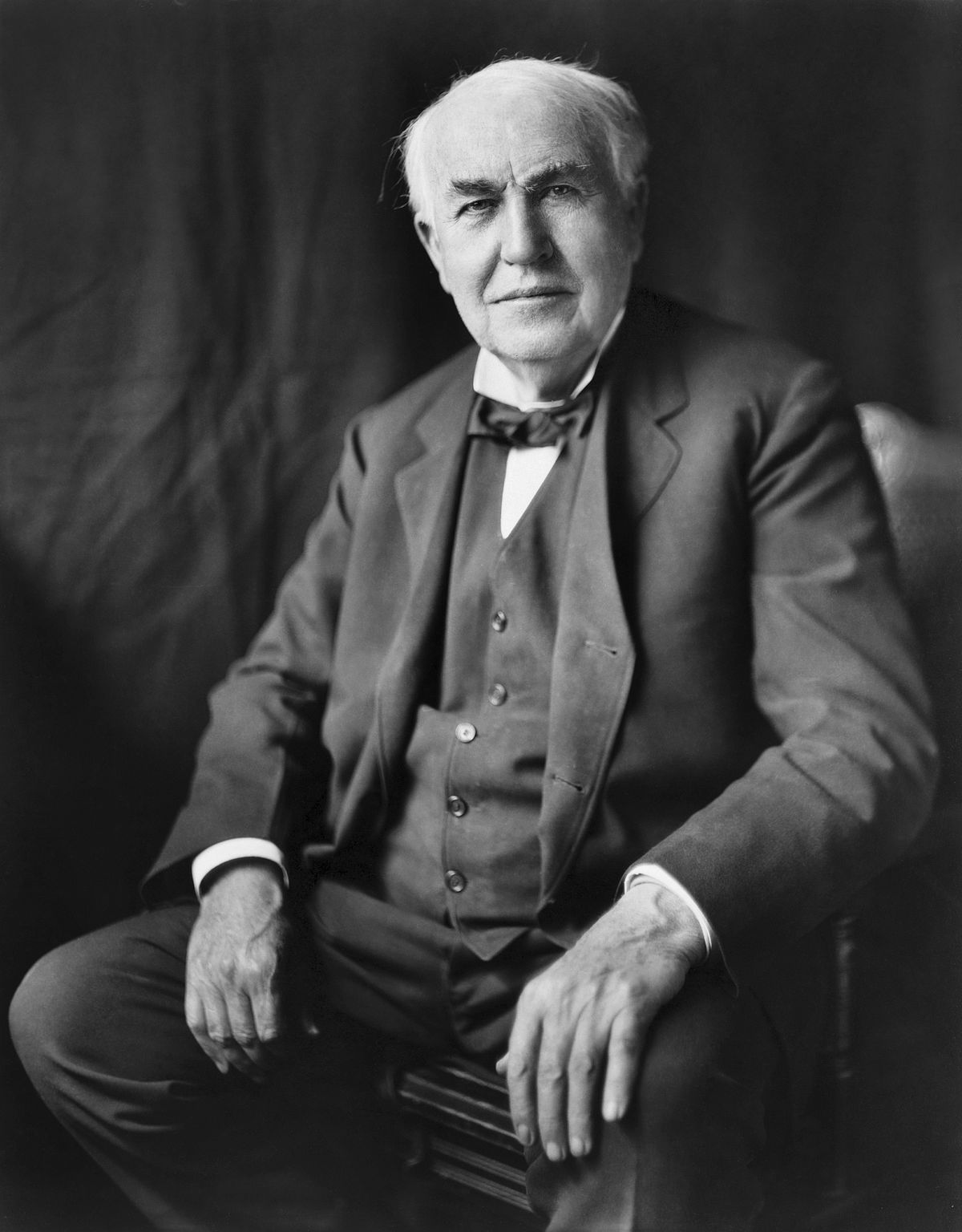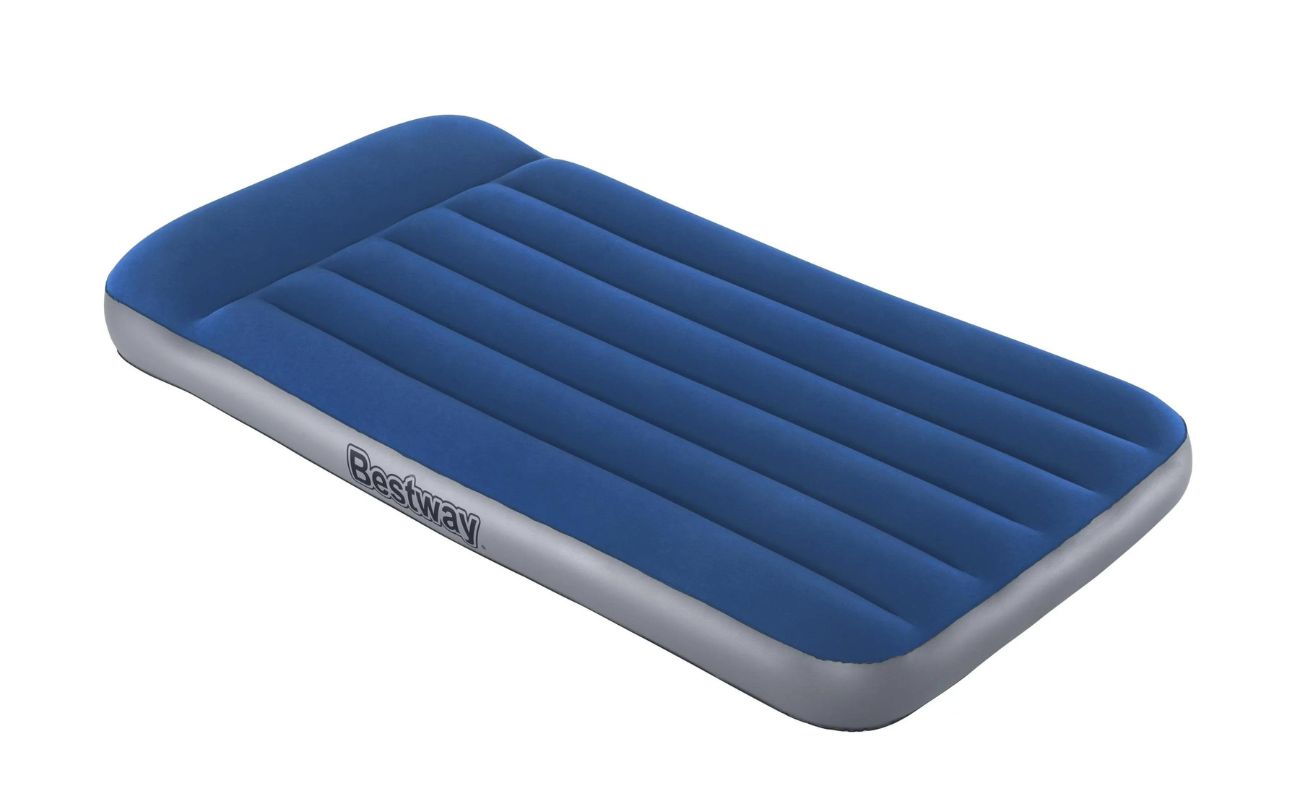

Articles
Who Invented Countertops
Modified: October 19, 2024
Discover the fascinating history of countertops and learn who invented this important element of kitchen design. Read our latest articles for more information on this topic.
(Many of the links in this article redirect to a specific reviewed product. Your purchase of these products through affiliate links helps to generate commission for Storables.com, at no extra cost. Learn more)
Introduction
Countertops play a crucial role in both the functionality and aesthetics of our kitchens and bathrooms. They provide a surface for food preparation, storage, and various activities. But have you ever wondered who invented countertops and how they have evolved over time? In this article, we will delve into the history of countertops, explore the ancient materials used, trace the evolution of countertop designs, investigate modern countertop materials, and even touch upon famous inventors in the countertop industry.
The concept of having a dedicated flat surface for working dates back centuries, but the idea of a countertop as we know it today is relatively recent. In the past, people often relied on makeshift surfaces such as wooden tables or stone slabs to carry out their daily tasks. It wasn’t until advancements in technology and design that countertops became a staple feature in our households.
Throughout history, various civilizations have contributed to the development of countertop materials and styles. From the ancient Egyptians to the Greeks and Romans, each culture had its own unique approach to creating functional and visually appealing surfaces. These early countertops, while rudimentary by today’s standards, set the foundation for the innovative designs and materials we have today.
Key Takeaways:
- Countertops have evolved from ancient stone and wood surfaces to modern materials like granite, quartz, and stainless steel, offering a perfect blend of durability, aesthetic appeal, and functionality.
- The countertop industry has been shaped by innovative inventors like John Harvey Kellogg, Joe Ragland, and Pierre Castan, whose contributions continue to inspire new advancements in materials and designs.
Read more: Who Invented The Mattress
History of Countertops
The history of countertops can be traced back to ancient civilizations, where flat surfaces were used for various purposes. The Egyptians, for example, used stone slabs as work surfaces to prepare food and perform other tasks. In ancient Greece and Rome, marble and other stone materials were popular choices for countertops.
However, it wasn’t until the Renaissance period that countertops began to take on a more prominent role in kitchen and bathroom design. During this time, the use of furniture-grade wood and intricate carpentry techniques allowed for the creation of more functional and elaborate countertops. These countertops often featured decorative details and engravings, showcasing the craftsmanship of the era.
In the 19th century, industrialization brought about significant changes in countertop production. With the invention of new materials and manufacturing processes, countertops became more accessible to the masses. For example, cast iron and enamel surfaces were commonly used in the construction of kitchen countertops.
Throughout the 20th century, advancements in technology and design continued to shape the evolution of countertops. The introduction of laminate countertops in the mid-20th century revolutionized the industry. Laminate offered durability, affordability, and a wide range of design options, making it a popular choice for many homeowners.
In recent decades, the countertop industry has seen a surge in innovation and the introduction of new materials. Granite and quartz countertops have become increasingly popular due to their durability and natural beauty. Additionally, engineered stone materials such as Porcelain and Dekton have gained traction in the market, offering unique patterns and high resistance to heat and stains.
Today, countertops come in a plethora of materials, styles, and finishes to suit every preference and budget. From classic options like marble and granite to contemporary choices like concrete and stainless steel, the possibilities are endless. Countertops have evolved from simple flat surfaces to integral elements of kitchen and bathroom design, combining functionality with aesthetics.
As the countertop industry continues to evolve, it’s fascinating to see how far we’ve come from the humble stone slabs of ancient civilizations. From basic work surfaces to architectural masterpieces, countertops have become an essential component of our living spaces, enhancing both practicality and beauty.
Ancient Countertop Materials
Ancient civilizations utilized various materials to create their countertops, each with its own characteristics and benefits. Let’s explore some of the commonly used materials in ancient times:
- Stone: Stone was one of the earliest materials used for countertops. Ancient Egyptians, Greeks, and Romans often used marble, granite, or limestone for their surfaces. These stones were prized for their durability and natural beauty, and they were carefully shaped and polished to create smooth countertop surfaces.
- Wood: Wood was another popular material for ancient countertops, especially in cultures with access to abundant timber resources. The Egyptians used wooden tables as work surfaces, while the Greeks and Romans utilized hardwoods like maple and oak. These wooden countertops were often carved and adorned with intricate designs, showcasing the craftsmanship of the time.
- Clay: In regions where stone and wood were scarce, clay was a common alternative for creating countertops. Ancient civilizations would mold clay into flat surfaces and then fire them to harden. The resulting clay countertops were durable and heat resistant, making them suitable for cooking and food preparation.
- Brick: Brick was occasionally used as a countertop material, particularly in areas with a strong brick-making tradition. These countertops were constructed by arranging and mortaring bricks together to form a flat surface. While not as elegant as stone or wood, brick countertops were sturdy and provided a rustic charm.
- Terrazzo: Terrazzo, a composite material consisting of chips of stone or glass embedded in concrete or resin, was also utilized in ancient times. This versatile material was often polished to create a smooth and glossy countertop surface. Terrazzo countertops were particularly popular in ancient Egypt and have been rediscovered and embraced by contemporary designers.
These ancient countertop materials laid the groundwork for the materials we use today. They showcased the ingenuity of early civilizations in creating functional and visually appealing work surfaces. While the methods and availability of these materials may have changed over time, their influence can still be seen in modern countertop design and construction.
Evolution of Countertop Designs
The evolution of countertop designs has been a fascinating journey, with advancements in technology, architecture, and design shaping the way we perceive and utilize these surfaces. Let’s dive into the key stages of their evolution:
- Ancient Designs: In ancient civilizations, countertop designs were primarily focused on functionality. Flat surfaces made of stone or wood provided a practical work area for food preparation and other tasks. These countertops often featured simple shapes and minimal adornments, showcasing the beauty of the natural materials.
- Renaissance Elegance: During the Renaissance period, countertop designs became more elaborate and decorative. Furniture-grade wood, such as oak and maple, was used to create intricate and ornate designs. Countertops featured engraved details, hand-carvings, and decorative patterns, reflecting the craftsmanship of the era.
- Industrial Revolution Simplicity: With the advent of the Industrial Revolution, countertop designs shifted towards simplicity and functionality. Cast iron and enamel surfaces became popular choices, known for their durability and ease of cleaning. These simple yet sturdy countertops were found in many households during this era.
- Mid-century Modern: The mid-20th century witnessed a revolution in countertop design with the introduction of laminate. Laminate countertops offered an array of colors, patterns, and textures, allowing homeowners to customize their kitchen and bathroom spaces. This era saw a shift towards bolder and more vibrant designs.
- Contemporary Elegance: In recent decades, countertop designs have embraced a more minimalist and sleek aesthetic. The focus is on clean lines, smooth surfaces, and a seamless integration with the overall design scheme. Modern materials such as granite, quartz, and engineered stone offer a wide range of colors, patterns, and finishes, enabling homeowners to achieve their desired look and feel.
Along with the changing styles, the functionality of countertops has also evolved. Countertops now offer integrated sinks, built-in appliances, and even charging stations for electronic devices. The concept of the kitchen island, a central countertop area for cooking, dining, and socializing, has become a staple in modern kitchen designs.
Furthermore, advancements in technology have allowed for the creation of specialized countertop surfaces. Heat-resistant materials enable direct cooking on the countertop, while antibacterial surfaces promote hygiene and cleanliness. The integration of smart technology into countertops opens up a whole new realm of possibilities and convenience.
As we continue to push the boundaries of design and technology, the evolution of countertop designs shows no signs of slowing down. Today, homeowners can choose from an incredible variety of materials, styles, and finishes to create a countertop that perfectly matches their personal taste and lifestyle.
The concept of countertops dates back to ancient times, but the modern countertop as we know it was popularized by the invention of Formica in 1912 by Daniel J. O’Conor and Herbert A. Faber.
Modern Countertop Materials
The world of countertop materials has expanded significantly in recent years, offering homeowners a vast array of choices to suit their style, budget, and lifestyle. Let’s explore some of the popular modern countertop materials:
- Granite: Granite countertops are a timeless and luxurious option. They are known for their durability, heat resistance, and unique natural patterns. Granite countertops require sealing to maintain their longevity and prevent staining.
- Quartz: Quartz countertops, also known as engineered stone, have gained immense popularity in recent years. They are composed of natural quartz crystals combined with resins and pigments. Quartz countertops are non-porous, resistant to stains and scratches, and come in a wide range of colors and patterns.
- Marble: Marble countertops exude elegance and sophistication. They are renowned for their distinct veining and natural beauty. However, marble is a softer and more porous material, requiring regular maintenance and care to prevent staining and etching.
- Concrete: Concrete countertops offer a sleek and industrial aesthetic. They can be customized with various colors and finishes, and are highly durable and heat resistant. Concrete countertops require sealant to protect against stains and must be properly maintained to prevent cracking.
- Stainless Steel: Stainless steel countertops are a popular choice in professional kitchens. They are durable, resistant to heat and bacteria, and easy to clean. Stainless steel countertops lend a modern and sleek look to any space, but they can show scratches and smudges more easily.
- Porcelain: Porcelain countertops are a newer addition to the market. They are made from a blend of clay, feldspar, and other minerals, resulting in a durable and heat-resistant surface. Porcelain countertops are available in a variety of colors and patterns, including designs that mimic the look of natural stone.
- Dekton: Dekton is a type of ultra-compact surface made from a mixture of glass, porcelain, and quartz. It offers exceptional resistance to heat, scratches, and stains. Dekton countertops come in a wide range of colors and finishes and are suitable for both indoor and outdoor use.
These modern countertop materials have revolutionized the industry, offering homeowners a combination of durability, functionality, and aesthetic appeal. From the natural beauty of granite and marble to the sleek and contemporary look of concrete and stainless steel, there is a countertop material to suit every taste and design preference.
It’s important to consider factors such as maintenance requirements, durability, and budget when selecting a countertop material. Each material has its own unique qualities and characteristics, so it’s essential to choose one that aligns with your lifestyle and design vision.
With the continuous advancement of technology and the introduction of innovative materials, the world of countertop choices will continue to evolve, offering even more options for homeowners to create their dream kitchen or bathroom space.
Read more: Who Invented CAD
Famous Inventors in the Countertop Industry
The countertop industry has been shaped by the innovative minds of many inventors who revolutionized materials, designs, and manufacturing processes. Let’s explore some of the famous inventors who have made significant contributions to the countertop industry:
- John Harvey Kellogg: While primarily known for his work in the field of medicine and nutrition, John Harvey Kellogg is also credited with inventing the first modern laminate countertop. In the early 1900s, Kellogg developed a method of layering multiple sheets of paper soaked in resin to create a durable, heat-resistant, and easily cleaned surface. This laid the foundation for the laminate countertops that became popular in the mid-20th century.
- Joe Ragland: Joe Ragland, an engineer and inventor, revolutionized the countertop industry with the invention of Corian. In the late 1960s, Ragland, working for the chemical company DuPont, developed a solid surface material that combined acrylic polymer and alumina trihydrate. Corian quickly gained popularity for its versatility, durability, and seamless appearance, ushering in a new era of solid surface countertops.
- Pierre Castan: Pierre Castan, a French inventor, introduced a groundbreaking material known as Dekton to the countertop market. Castan, along with his team at Cosentino, spent over a decade researching and developing a surface that combined different raw materials and innovative manufacturing techniques. Dekton offers exceptional durability, UV resistance, and a wide array of colors and finishes, making it suitable for both indoor and outdoor applications.
- Henry Bessemer: While not directly involved in the countertop industry, Henry Bessemer, an English inventor, played a crucial role in the development of stainless steel. In the late 19th century, Bessemer invented the Bessemer process, a method of producing steel in large quantities. Stainless steel, with its corrosion-resistant properties and sleek appearance, became a popular material for countertops in commercial kitchens and modern homes.
- Various Engineers and Innovators: The field of countertop technology and design continues to advance thanks to the contributions of numerous engineers, researchers, and inventors. These individuals work tirelessly to develop new materials, improve manufacturing processes, and integrate technology into countertops. Their innovations have led to the creation of surfaces with heat-resistant properties, antibacterial coatings, and even smart features like integrated charging stations.
These inventors, along with countless others, have left an indelible mark on the countertop industry, transforming it into what it is today. Their dedication to innovation and their pioneering spirit continue to inspire new generations of inventors and push the boundaries of countertop design and functionality.
As the demand for innovative and sustainable materials grows, we can expect to see even more advancements and inventions in the countertop industry. From eco-friendly materials to cutting-edge manufacturing techniques, the inventors of tomorrow will continue to shape the future of countertops.
Conclusion
Countertops have come a long way since their ancient origins, evolving from basic work surfaces to integral elements of kitchen and bathroom design. Throughout history, we have seen the development of various materials and designs that have shaped the countertops we know today.
From the ancient Egyptians’ use of stone slabs to the Renaissance-era craftsmanship and the industrial revolution’s mass production, countertops have always been a reflection of our needs and aspirations. The introduction of modern materials such as granite, quartz, concrete, and stainless steel has further expanded our choices, allowing for a perfect blend of durability, aesthetic appeal, and functionality.
Behind these advancements are the inventors and innovators who have made significant contributions to the countertop industry. From John Harvey Kellogg’s invention of laminate countertops to Joe Ragland’s development of Corian and Pierre Castan’s creation of Dekton, these individuals have left an indelible mark on the industry.
Looking into the future, we can anticipate even more exciting developments in the countertop industry. From the integration of smart technology to the use of eco-friendly and sustainable materials, the possibilities are endless. Countertops will continue to adapt to our changing needs and preferences, enhancing both the functionality and beauty of our living spaces.
In conclusion, the journey of countertops is a testament to human ingenuity and the quest for innovation. As we continue to push the boundaries of design and technology, countertops will play an even more significant role in our daily lives, transforming our kitchens and bathrooms into spaces that not only serve practical purposes but also inspire and delight.
Frequently Asked Questions about Who Invented Countertops
Was this page helpful?
At Storables.com, we guarantee accurate and reliable information. Our content, validated by Expert Board Contributors, is crafted following stringent Editorial Policies. We're committed to providing you with well-researched, expert-backed insights for all your informational needs.















0 thoughts on “Who Invented Countertops”